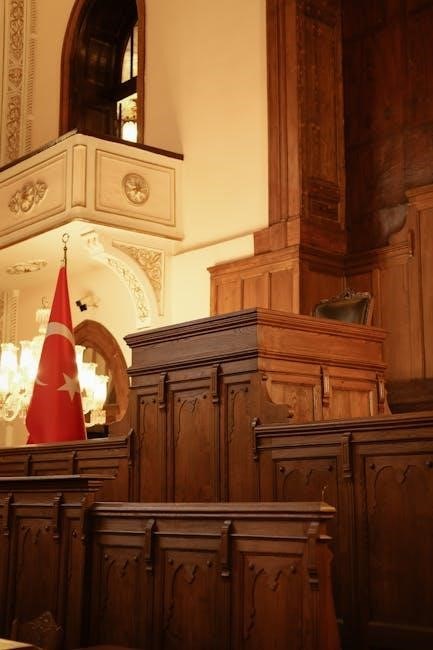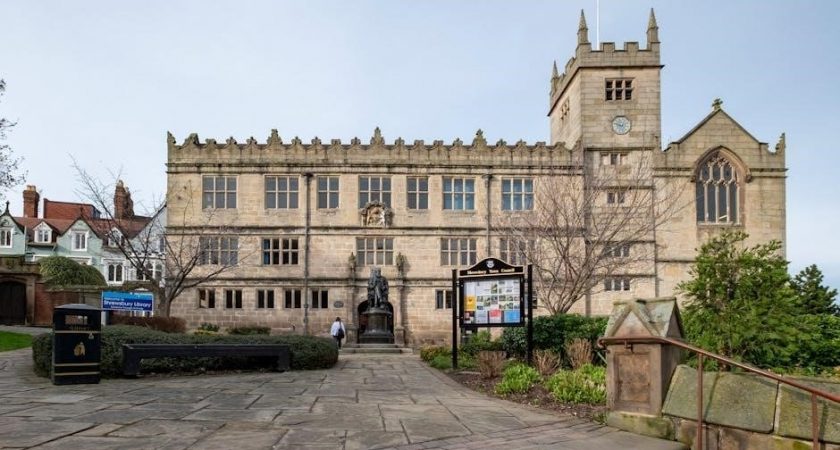The Council of Trent, an ecumenical council of the Catholic Church, convened from 1545 to 1563 to address the Protestant Reformation, reform Church practices, and reaffirm Catholic doctrines, shaping Counter-Reformation efforts and modern Catholicism.
1.1 Historical Context of the Council
The Council of Trent convened in 1545, amidst the turmoil of the Protestant Reformation, which challenged Catholic doctrine and practices. Europe was divided politically and religiously, with the Catholic Church facing internal corruption and external threats. The council, spanning 18 years, aimed to address these issues. It began under Pope Paul III, continued through successive papacies, and concluded in 1563. This ecumenical gathering was a pivotal response to Protestantism, seeking to reform the Church and reaffirm its teachings. The council’s historical context was marked by religious upheaval, political tensions, and the need for theological clarity, setting the stage for the Counter-Reformation.
1.2 Significance of the Council in Church History

The Council of Trent holds immense significance as a defining moment in Catholic Church history, marking a robust response to the Protestant Reformation. It reaffirmed Catholic doctrines, established clear theological boundaries, and initiated reforms to address corruption and inefficiencies within the Church. The council’s decrees and canons provided a blueprint for the Counter-Reformation, revitalizing Catholic identity and practices. Its impact endured, shaping the Church’s structure, liturgy, and educational systems for centuries. Trent’s legacy is profound, ensuring the preservation of Catholic traditions while adapting to the challenges of a fractured religious landscape, making it a cornerstone of modern Catholicism.
1.3 Overview of the Council’s Objectives
The Council of Trent aimed to combat Protestantism, reform Church practices, and clarify Catholic doctrine. Key objectives included addressing theological disputes, correcting abuses, and strengthening ecclesiastical discipline. By reaffirming traditional teachings and implementing reforms, the council sought to unify the Church and counter Protestant influence. The council also focused on standardizing liturgical practices and enhancing priestly education. These goals were outlined in its decrees and canons, providing a comprehensive framework for religious and institutional renewal, ensuring the Church’s vitality and doctrinal integrity for future generations.
Background and Causes of the Council of Trent
The Protestant Reformation, sparked by Martin Luther, challenged Catholic doctrine, prompting the Church to address theological disputes and internal reforms, leading to the Council’s convening.
2.1 The Protestant Reformation and Its Impact
The Protestant Reformation, initiated by Martin Luther in 1517, challenged Catholic doctrines like indulgences and papal authority, leading to widespread religious and social upheaval across Europe. This movement fragmented the Church, creating new Protestant denominations and prompting the Catholic Church to reassess its practices. The Reformation’s emphasis on individual faith and scripture over tradition pushed the Church to clarify its teachings and implement reforms. This theological and cultural shift compelled the Church to convene the Council of Trent to counter Protestantism and restore unity.
2.2 The Catholic Church’s Response to the Reformation
The Catholic Church’s response to the Reformation was initially slow, marked by internal divisions and reluctance to reform. After decades of hesitation, the Church convened the Council of Trent, which aimed to address Protestant challenges and restore Catholic unity. The Council sought to clarify doctrines, correct abuses, and strengthen Church discipline. It reaffirmed traditional teachings, such as the importance of sacraments and the authority of Scripture and tradition. Additionally, the Council promoted reforms like the establishment of seminaries and the creation of the Catechism of the Council of Trent to unify Catholic teachings and counter Protestant influence effectively.
2.3 Political and Religious Climate of 16th-Century Europe

16th-century Europe was marked by deep religious and political divisions. The Protestant Reformation had fragmented the Church, with Northern Europe largely Protestant and Southern Europe remaining Catholic. Politically, the Holy Roman Empire was decentralized, and conflicts between monarchs and the Papacy persisted. The rise of nation-states like France and Spain further complicated the religious landscape. Additionally, the Ottoman Empire’s expansion into Europe heightened tensions. This volatile climate of religious upheaval, political fragmentation, and external threats created an urgent need for the Catholic Church to reform and unify, setting the stage for the Council of Trent.

Proceedings and Key Events of the Council
The Council of Trent, spanning 1545 to 1563, included multiple sessions, key decrees, and canons addressing Church reform and doctrine. Prominent figures shaped its outcomes, influencing Catholic renewal.
3.1 Major Events and Decrees of the Council
The Council of Trent issued significant decrees, such as the reaffirmation of Catholic doctrines, the establishment of seminaries, and the development of the Tridentine Mass. These reforms aimed to counter Protestantism and strengthen Church discipline. Key decrees addressed sacraments, indulgences, and clerical education, laying the groundwork for the Counter-Reformation. The council’s final session in 1563 solidified its legacy, providing a blueprint for Catholic renewal and doctrinal clarity that shaped the Church for centuries.
3.2 The Structure and Sessions of the Council
The Council of Trent convened in 1545 and concluded in 1563, spanning nearly two decades with multiple interruptions. It held over 25 sessions, divided into three periods, with locations shifting between Trent and Bologna. Attendance varied, initially limited to Italian bishops but expanding as the council progressed. The structure included formal debates, voting on decrees, and detailed minutes recorded. Despite political and religious challenges, the council maintained a structured approach, ensuring continuity and coherence in its proceedings. Its sessions were instrumental in shaping the council’s outcomes, balancing doctrinal discussions with practical reforms. This organizational framework was key to its enduring impact.
3.3 Key Figures and Their Roles in the Council
Pope Paul III initiated the council, while Cardinals like Marcello Cervini and Giovanni Morone played pivotal roles in guiding its proceedings. Prominent theologians, including Jesuit Francis Toledo, influenced doctrinal discussions. Charles V, Holy Roman Emperor, supported the council politically, ensuring its continuation despite challenges. Bishops from across Europe contributed to debates, with figures like Archbishop Reginald Pole shaping its direction. Their combined efforts ensured the council addressed both theological and practical reforms, leaving a lasting legacy in Catholic Church history and Counter-Reformation efforts. These leaders navigated complex religious and political landscapes to achieve the council’s ambitious goals. Their contributions remain central to its legacy.
The Council reaffirmed Catholic doctrines, rejecting Protestant views on justification and sacraments, and established the Tridentine Mass, solidifying liturgical practices and theological principles that shaped modern Catholicism. The Council of Trent reaffirmed core Catholic doctrines, emphasizing the importance of tradition and Scripture, and upheld key teachings such as transubstantiation, the sacramental system, and the authority of the Church hierarchy. It rejected Protestant views on justification by faith alone, asserting the necessity of works in salvation. The Council also reaffirmed the veneration of saints, the use of indulgences, and the sacraments, providing a theological foundation that countered Protestantism and preserved Catholic orthodoxy, ensuring the Church’s doctrinal integrity for centuries. The Council of Trent directly addressed Protestant theology by rejecting key principles such as sola fide and sola scriptura. It affirmed the Catholic Church’s authority, emphasizing the role of tradition alongside Scripture. Trent refuted the notion of justification by faith alone, stressing the necessity of good works and sacraments. The Council also countered Protestant critiques of indulgences, clerical abuses, and hierarchical structures, while upholding the sacramental system and the veneration of saints. This robust theological response aimed to preserve Catholic doctrine and counter Protestant influence, shaping the Church’s identity for centuries to come and solidifying its stance against Reformation ideals. The Council of Trent led to the development of the Tridentine Mass, a standardized liturgical rite that reaffirmed traditional Catholic worship practices. It emphasized the sacraments, particularly the Eucharist, and upheld the use of Latin to maintain unity and reverence. The Tridentine Mass was a direct response to Protestant critiques, reinforcing Catholic liturgical traditions and countering the notion of a simplified, vernacular service. This liturgical reform became a cornerstone of the Counter-Reformation, ensuring a uniform and devout celebration of the Mass across the Catholic Church, while also preserving its theological and cultural heritage for centuries to come. The Council of Trent initiated significant practical reforms, including ecclesiastical discipline, seminary establishment, and educational promotion, to strengthen the Catholic Church’s structure and clergy effectiveness. The Council of Trent introduced stringent ecclesiastical reforms to combat corruption and promote discipline within the Church. Bishops were required to reside in their dioceses and oversee spiritual matters. Clergy were held to higher moral standards, and measures were taken to eliminate abuses such as pluralism and simony. The Council also mandated regular synods to ensure compliance with reforms. These disciplinary measures aimed to restore integrity and accountability within the Church hierarchy, ensuring a more devout and dedicated clergy. This marked a significant shift towards a more structured and disciplined ecclesiastical governance system. The Council of Trent emphasized the importance of Catholic education to counter Protestantism and strengthen Church doctrine. It promoted literacy through the establishment of schools and universities, ensuring the faithful could understand Catholic teachings. The Catechism of the Council of Trent was a key tool, providing a clear and accessible summary of Catholic doctrine. Clergy were encouraged to prioritize education, teaching the laity and maintaining uniformity in religious instruction. This focus on education helped revitalise Catholic identity and equip believers to defend their faith, fostering a more informed and devout congregation across Europe. The Council of Trent mandated the establishment of seminaries to reform priestly education, ensuring clergy were well-trained in theology, morals, and liturgical practices. These institutions aimed to produce devout, knowledgeable priests capable of countering Protestant influence. The seminary system became a cornerstone of Catholic reform, standardizing clerical education and enforcing discipline. By focusing on the spiritual and intellectual development of priests, the Council sought to elevate the Church’s effectiveness in spreading its teachings and maintaining orthodoxy. This reform had a lasting impact, shaping the priesthood for centuries and strengthening the Church’s mission. The Council of Trent was pivotal in shaping modern Catholicism, introducing reforms that strengthened Church doctrine and practices, leaving a lasting legacy on its structure and influence. The Council of Trent played a central role in the Counter-Reformation by reaffirming Catholic doctrines and implementing reforms. It countered Protestant theology, promoting a unified Catholic identity and revitalized practices. The council’s decrees strengthened Church authority, encouraged clerical education, and established seminaries, ensuring a well-trained clergy. Its emphasis on tradition and sacraments helped to distinguish Catholicism from Protestantism. Through these measures, the Council of Trent became a cornerstone of the Counter-Reformation, shaping the Catholic Church’s response to religious challenges and influencing its structure for centuries. The Council of Trent significantly reshaped the Catholic Church’s structure by establishing seminaries for priestly training, enhancing episcopal authority, and centralizing ecclesiastical governance. It mandated bishops to reside in their dioceses, improving oversight and discipline. The council also promoted uniformity in liturgical practices, such as the Tridentine Mass, and strengthened the authority of the papacy. These reforms aimed to create a more cohesive and organized Church, addressing internal weaknesses and countering external challenges. The structural changes implemented at Trent laid the foundation for a more centralized and standardized Catholic Church, enduring for centuries and influencing modern ecclesiastical governance. The Council of Trent’s decrees continue to shape modern Catholicism through its emphasis on sacramental theology, clerical education, and liturgical uniformity. The Tridentine Mass, though adapted by Vatican II, remains a cornerstone of Catholic worship, reflecting Trent’s liturgical legacy. The establishment of seminaries ensured standardized priestly training, fostering a disciplined clergy. Trent’s catechism provided a clear doctrinal framework, influencing Catholic education and apologetics. Its reforms strengthened Church hierarchy and counter-Reformation strategies, ensuring a unified response to theological challenges. These foundational changes remain integral to Catholic identity, underscoring Trent’s enduring influence on contemporary Catholic doctrine, practice, and ecclesiastical structure. The Council of Trent’s Catechism, established in 1566, provided a doctrinal guide for clergy and laity, shaping Catholic education and reform efforts globally. The Council of Trent’s Catechism, officially known as the Roman Catechism, aimed to clarify Catholic doctrine in response to Protestant challenges. It emphasized the importance of sacraments, moral teachings, and hierarchical authority. The catechism was structured to educate clergy and laity alike, ensuring a unified understanding of Catholic theology. Its content included detailed explanations of the Apostles’ Creed, the Sacraments, the Ten Commandments, and prayer, providing a comprehensive guide for religious instruction and countering Protestant interpretations. This foundational document remains influential in Catholic education and theology to this day. The Catechism of the Council of Trent profoundly shaped Catholic teachings by providing a clear, authoritative guide for clergy and laity. It reinforced traditional doctrines, emphasizing sacramental life, hierarchical authority, and moral teachings. The catechism became a benchmark for Catholic education, ensuring uniformity in religious instruction. Its influence extended beyond the Counter-Reformation, shaping liturgical practices and theological discourse. The document’s structured approach to faith formation has endured, making it a foundational text in Catholicism. Its impact is evident in later catechisms and remains a vital resource for understanding Catholic doctrine and practice. The Catechism of the Council of Trent served as a powerful tool to counter Protestantism by clarifying Catholic doctrines under scrutiny. It addressed key theological disputes, such as sacramental efficacy and hierarchical authority, providing clear, scripturally grounded responses. The catechism emphasized the importance of tradition alongside Scripture, challenging Protestant sola scriptura. Its structured format made it accessible for widespread dissemination, helping to reinforce Catholic identity among the faithful. By addressing Protestant critiques directly, the catechism played a pivotal role in the Counter-Reformation, ensuring the preservation of Catholic teachings and practices during a period of significant religious upheaval. The Council of Trent was pivotal in shaping Catholicism, reaffirming doctrines, and countering Protestantism, leaving a lasting legacy that continues to influence the Church today. The Council of Trent achieved significant doctrinal clarifications, reforms, and the establishment of seminaries, strengthening Catholic identity. Its decrees and canons remain foundational, shaping modern Catholic practices and theology. The Council of Trent profoundly shaped Christianity by strengthening Catholic identity, countering Protestantism, and fostering reforms. Its decrees unified doctrine, revitalized clergy, and inspired the Counter-Reformation, leaving a lasting legacy in Catholic practices, education, and liturgy, such as the Tridentine Mass and catechism, ensuring Catholicism’s resilience and influence for centuries. The Council of Trent remains pivotal in modern Catholicism, influencing liturgy, doctrine, and Church structure. Its emphasis on sacraments, clerical education, and Counter-Reformation strategies continues to shape Catholic practices and identity. The Tridentine Mass, though updated, reflects its liturgical legacy. Doctrine reaffirmed at Trent guides contemporary Catholic teachings, ensuring continuity. Its focus on education and seminary training laid the groundwork for a resilient clergy. Thus, Trent’s decisions remain foundational, addressing modern challenges while preserving tradition, ensuring its enduring relevance in the Catholic Church’s mission and spiritual life today. Primary documents include the Council’s decrees and canons, while John O’Malley’s “Trent: What Happened at the Council” provides a concise overview. The Catechism of the Council of Trent and historical records offer deeper insights. Primary documents from the Council of Trent include its official decrees, canons, and the Catechism of the Council of Trent. These records provide firsthand insights into the Council’s proceedings, theological debates, and reforms. The Council convened in 1545 and concluded in 1563, leaving behind a wealth of historical materials. These documents are available in PDF formats online, offering scholars and enthusiasts access to original texts. They remain essential for understanding the Council’s role in shaping Catholic doctrine and practice, as well as its response to the Protestant Reformation. Modern scholarship offers diverse interpretations of the Council of Trent, emphasizing its role in shaping Catholic identity and the Counter-Reformation. Historians like John W. O’Malley highlight the Council’s cultural and religious significance, while others explore its impact on liturgical reforms and theological clarifications. Recent studies analyze the Council’s legacy, linking it to the development of modern Catholicism. Scholars also examine the Council’s response to Protestantism, underscoring its efforts to reform internal practices and reaffirm doctrine. These interpretations provide a nuanced understanding of Trent’s influence on Church history and its enduring relevance in contemporary Catholic thought and practice. The Council of Trent’s documents, including its decrees and canons, are widely available in PDF format through academic and religious websites. Reputable sources such as university archives, historical societies, and Catholic publishers provide accessible versions of these texts. The Catechism of the Council of Trent, also known as the Roman Catechism, is among the most frequently published documents. Many platforms offer free downloads, enabling scholars and enthusiasts to explore the Council’s teachings and reforms. These resources are invaluable for understanding the Council’s historical significance and its enduring influence on Catholic doctrine and practice.
Theological and Doctrinal Impact
4.1 Reaffirmation of Catholic Doctrines
4.2 Response to Protestant Theology
4.3 The Development of the Tridentine Mass

Practical Reforms and Implementations
5;1 Ecclesiastical Reforms and Disciplinary Measures
5.2 The Promotion of Catholic Education and Literacy
5.3 The Establishment of Seminaries for Priestly Training
Historical Significance and Legacy
6.1 The Council’s Role in the Counter-Reformation
6.2 The Impact on the Catholic Church’s Structure
6.3 The Council’s Influence on Modern Catholicism

The Council of Trent’s Catechism

7.1 The Purpose and Content of the Catechism
7.2 The Influence of the Catechism on Catholic Teachings
7.3 The Catechism’s Role in Countering Protestantism

8.1 Summary of the Council’s Achievements
8.2 The Lasting Effects of the Council on Christianity
8.3 The Council’s Relevance in Contemporary Catholicism

Sources and Further Reading
9.1 Primary Documents and Historical Records
9.2 Modern Scholarship and Interpretations
9.3 Accessing the Council of Trent PDF
